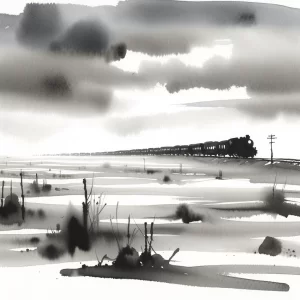
Risks Lurking Behind Every Sparkler
I’m not really a Katy Perry fan, even going back to the Blue Origin debacle. But, I already used Animal Collective over at This Week in Science, so we’re going with this as our soundtrack.
It’s the Fourth of July. The barbecue is sizzling, the kids are giggling, and the first crackle of fireworks lights up the sky. But while your eyes are turned upward, emergency rooms across the country are bracing for impact. Behind the oohs and aahs, a growing public health problem has been quietly exploding.
A recent study published in Injury Epidemiology has pulled back the curtain on ten years of firework-related injuries in the U.S.—and the results are more sobering than celebratory. From 2012 to 2022, over 122,000 people were treated in emergency rooms due to firework injuries. That’s nearly the population of Berkeley, California.
And the trend? It’s rising.
Fireworks: A Decade of Danger
Using data from the National Electronic Injury Surveillance System (NEISS), researchers at UC Riverside tracked every firework-related ER visit over the past decade. The findings show a 17% increase in injuries, from 2.61 per 100,000 people in 2012 to 3.05 in 2022. But the real explosion came in 2020, when injury rates skyrocketed to 4.72 per 100,000, likely fueled by pandemic restrictions canceling public displays and driving people to amateur alternatives.
Behind these numbers are patterns that reveal who’s most at risk—and why.
The most injured group? Young men aged 20–24, with an injury rate of 7.13 per 100,000. That’s almost triple the national average. Whether it’s peer pressure, thrill-seeking, or overconfidence, young adults are taking the brunt of the blast.
And it’s not just minor burns or scrapes. More than 1 in 5 adults over 20 required hospitalization. Men were nearly three times as likely as women to be seriously injured.
Hands, Faces, and Feet: The Most Common Casualties
Picture this: A sparkler lights. A firecracker fumbles. An aerial shell misfires. The most vulnerable targets? Hands and arms (42%), (remember NFL defensive end Jason Pierre-Paul?) followed closely by the head and neck (36%), and then the legs (14%).
Burns made up nearly half of all injuries—especially among kids—but the most serious cases often involved fractures, amputations, or internal injuries. Nearly 90% of amputations in the study led to hospital admission or transfer to a trauma center.
Sparklers, while popular and seemingly harmless, still accounted for over 16% of injuries. But it’s aerial devices and illegal fireworks that posed the greatest risk. Aerials caused 32% of all serious injuries, the highest of any category. Homemade or banned explosives weren’t far behind at 21%.
The Pandemic Sparked More Than Just Fireworks
Injuries peaked dramatically in 2020, with both minor and major injuries more than doubling from previous years. Experts suggest that the cancellation of public firework shows during COVID-19 led to a surge in at-home pyrotechnic use—often without the proper safety equipment, distance, or experience.
However, even as pandemic restrictions eased, the rates haven’t returned to pre-2020 levels. The danger has become more than a temporary spike—it’s a sustained trend.L
Lessons from Abroad, Warnings from Home
While this study focuses on the U.S., the fireworks problem is global. Countries like Finland and the Netherlands have cut firework injuries in half through tighter sales regulations, mandatory safety glasses, and time-limited usage windows. Meanwhile, states like Hawaii have seen reductions in injuries after tightening access, while Minnesota saw a 100% spike in injuries after loosening restrictions.
And here at home? Over 30% of fireworks tested by the Consumer Product Safety Commission were found to be non-compliant, with issues ranging from illegal chemicals to dangerous fuse designs.
What’s Next: Policy, Prevention, and Public Awareness
The study authors don’t mince words: To curb this injury epidemic, the U.S. needs stronger regulation, better consumer education, and a rethinking of who should be lighting the fuse.
High-risk devices like aerial shells and homemade bombs may need tighter restrictions or outright bans. Public education campaigns—especially targeting young men—could save hands, eyes, and lives.
And for families planning next year’s July 4th bash, there’s a message too: Sometimes the safest celebration is the one you leave to the professionals.
Join the Conversation
How would stricter firework laws impact celebrations in your community?
What role should public health agencies play in regulating at-home firework use?
Does this study change how you think about sparklers, firecrackers, or aerials?



